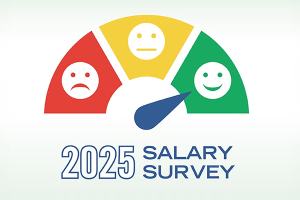Recovering from natural disasters
When a health care facility is damaged by a natural event, the organization normally has insurance to try to make the facility whole and repair the damages after the fact.
But health facilities professionals typically don’t think about an insurance claim until after the event has occurred. The prevailing mindset is to get through the disaster, then figure out about filing insurance. Unfortunately, in the weeks following a disaster, health care facilities can lose receipts, take the wrong photos of damage or fail to procure help in the right way.
The facility could lose thousands or even millions of dollars in potential insurance claims unless they implement a program that starts the process early in the disaster or even before the disaster strikes.
Administrative preparation
There are better ways to prepare a health care facility for disaster support and recovery.
In known events, where a severe storm or hurricane has been forecast and flooding is inevitable due to heavy rainfall, health care facilities need to have a plan of tracking the administrative documents they will need for filing insurance.
Teams need to be trained for the important work of documenting pre-disaster conditions as well as preparation costs, damages and supplies purchased post-disaster to recover from the damages.
For unknown events, such as tornadoes, explosions or flash flooding, tracking expenses early in the process will ensure facilities professionals are submitting every cost associated with the disaster. Here are a few tips to help track costs:
- Work closely with the finance team to ensure all parties are on the same page when preparing and recovering from disasters.
- Create a disaster payroll code so all associates working on a disaster pay schedule can be tracked.
- Create a disaster key word for all expenses related to equipment and supplies purchased specifically in response to or recovering from the disaster.
- Track all travel expenses for team members who travel in support of the disaster.
- Take pictures before the disaster of facility areas prone to damage or flooding from the event (review the facility's hazard vulnerability analysis, flood emergency plans and sewage emergency plans for vulnerabilities).
- Ensure contractors are keeping records for all costs, including receipts and tickets for debris removal.
- Educate teams annually on the process and on the documentation required.
- Record the time of the expense project manager (if the facility uses one).
- Continue to coordinate with the finance team, sharing all the necessary information (i.e., damages, supplies needed and budget). Health care finance teams are a crucial part of the disaster recovery process and are essential to facilities coming out on the other side.
FEMA assistance
The Federal Emergency Management Agency (FEMA) can help state, local, tribal and territorial governments, as well as certain private nonprofit organizations, respond to and recover from major disasters or emergencies. Any costs that private, not-for-profit health care systems incur following a disaster that are not covered by insurance can be provided by FEMA’s Public Assistance Program.
Following disasters such as hurricanes, tornados, earthquakes or wildfires, FEMA will reimburse 75% to 100% of systems’ costs for services such as debris removal, overtime pay to workers, procurement of special equipment like chainsaws or generators, and repair to damaged equipment or infrastructure.
If a facilities professional has kept proper documentation as noted above, they will be more successful in receiving FEMA’s full assistance, just as if they were filing insurance claims. If a facilities professional experiences a number of disasters, they may consider having a full-time project manager to track, coordinate and file disaster expenses.
For facilities professionals who know they are at risk for damage from disasters, FEMA’s Hazard Mitigation Assistance Grants can provide funding for eligible mitigation measures to reduce disaster losses. When a facilities professional can reduce or eliminate long-term risks to people and property from future disasters, they can also break the cycle of disaster damage, reconstruction and repeated damage. This is a long-term solution to benefit not just the physical facility, but the community as well. Like the Public Assistance Program, FEMA will pay 75% of the expenses to mitigate disasters.
For example, FEMA has provided $84 million to a hospital in Florida to mitigate the effects of hurricanes through flood walls and upgrading windows and roofs. Not only does this investment ensure the facility is available during a disaster, but it will also protect the facility’s infrastructure, which can, in turn, help with insurance costs. By reducing risk, facilities professionals can also reduce the cost of their policy.
Too many hospitals are missing out on this funding. Some hospitals don’t know the program exists; others think it’s too complicated to go through all the paperwork and apply, so they don’t pursue it. This is a missed opportunity.
Facilities professionals already should have receipts and photos and documents from their administrative preparation. Relaying these documents to a grant application (which can be outsourced) is not much more work than they already need to do to fully benefit from insurance policies.
Where to start?
FEMA’s website has information on the Public Assistance Program and the Hazard Mitigation Assistance Grants to help health facilities professionals get started.
FEMA works with each state’s emergency management agency, so facilities professionals should also work alongside state agencies as they pursue funding. City or county emergency management agencies also may be able to assist in securing funding, so facilities professionals should continue to build and cultivate their relationships with local agencies to prepare for and mitigate disasters.
As climate change intensifies disasters across the country, it is imperative that health care facilities be prepared for the worst. Hospitals are vital in times of emergency, and every effort facilities professionals can take to be ready for disasters, bounce back faster and avoid damage in the first place will help prepare the greater community to deal with emergencies.
Scott Cormier is vice president of emergency management, environment of care and safety at Medxcel .




